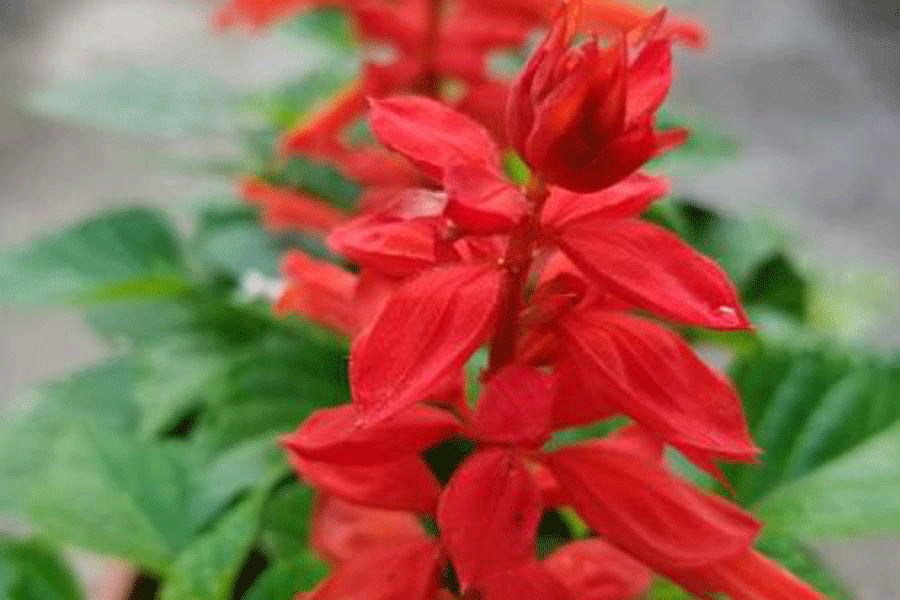One of the most popular plants across the gardens of Salt Lake and New Town this season are Salvias. A tender perennial, this plant appears as a colorful spike of densely-packed flowers. The tubular blossoms appear atop square stems and velvety leaves.
The botanical name of the plant is Salvia splendens. The genus name Salvia comes from the Latin word salveo meaning ‘to save or heal’ and refers to the medicinal properties endorsed to some plants in the genus. The specific label splendens means splendid. Plants in the genus Salvia are herbs, shrubs, or sub-shrubs and are generally perennial and aromatic.
The plant is commonly known as Red Salvia, Scarlet Sage, Blood Sage etc. Its flowers are typically red, and bloom over a long period, from December to February. Salvia’s bright cherry red blooms provide an accent in a cottage or pollinator-themed garden.

Sourced by the Telegraph
They belong to the mint family, native to Brazil, and are grown as an annual in India. They grow from 12 to 36 inch high and nearly 12 inches wide.
Compact selections of Salvias are good for edging and in containers. The tubular showy flowers provide nectar to local butterflies and sunbirds. They are available in various shades of red, pink, blue, lavender, orange, and white. They come out through the colourful sepals, which also form a tube. In the red variety, the flower is the same colour as the sepals.

The Telegraph
The genus is distributed throughout the world (over 900 total species), with three distinct regions of diversity: approximately 600 species in central America and South America, 250 species in central Asia and the Mediterranean, and 90 species in eastern Asia.
Soil- Salvia requires well-drained and mineral-rich soil for growth. The plant prefers moist soil, so make sure to water every day in regulated quantities.
Sunlight- Salvia is an outdoor plant and requires plenty of sunlight. It needs to be planted in open spaces so it can access bright sunlight. The minimum requirement of Salvia plants is about five to six hours of sunlight every day.

The Telegraph
Water- Salvia loves water and moist soil. Water it daily, but over-watering can lead to root rot that might kill the plant gradually. Avoid watering if the soil looks too wet.
Fertiliser- Apply fertiliser at least once every month. Apply liquid fertiliser for quick results. Use balanced N:P:K (20:20:20) or (19:19:19) for vigorous health and intensive bloom.
Pests and diseases- Salvias get frequently infected by pests like snails, slugs and whiteflies. Drenching the Salvia splendens plant in water and neem oil will solve the problem. A mix of liquid soap and water is also effective in removing pests from the plants.
Care- This low maintenance plant prefers full sun to part shade and well-drained soil. Propagate Salvia by stem cutting. When blooms are spent, remove these spikes to encourage additional production.
Medicinal use- Salvia has amazing health benefits. Indians have used extracts from this plant in ayurvedic and herbal medicines such as for treating wounds. The Salvia plant is still widely used as medicine for certain illnesses and yields great results.
Indian traditional medicine has made use of Salvia plants to treat diabetes too. It is useful for removing mucus congestion, which helps treat colds and coughs. Seeds of the Salvia plant are commonly used as an agent that induces vomiting, for dysentery, colic, and haemorrhoids.
Extracts of salvia plants have anti-inflammatory properties, which can help ease swelling and bloating of the body. Salvias help deal with infections and relieve pain too.
